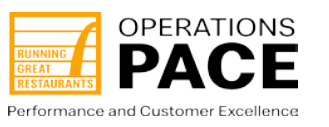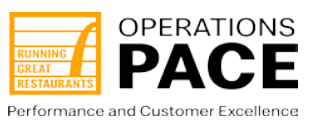Information
-
Inspection Title
-
Document No.
-
Client / Site
-
Conducted on
-
Prepared by
-
Location
-
Personnel
Prevention of Slips, Trips, Falls
Prevention of Manual Material Handling Injuries
Chemicals
-
Inventory of hazardous chemicals is current (within one year)
-
SDS readily available for each hazardous material in inventory?
-
Chemicals stored properly (Insecticides, Detergents / Sanitizers, Caustics/Acids/Polishes)
-
All containers properly identified and labeled with hazard warnings
-
Proper PPE used when handling chemicals (see SDS) - splash proof goggles available, maintained & used
-
HazComm training received by all employees & documentation in personnel files (current within 1 year)
-
Working eyewash station available with continuous 15-min. flow
-
Copy of HazComm Plan (Chapter 13 SPM, 2001)
Storage Areas
-
Aisles clear & floor clean
-
Shelves & racks are of adequate strength & are secured
-
Compressed gas cylinders stored in upright position, are individually chained & those not in use have protective caps in place
-
Employees frequently receive training on correct lifting techniques
-
Heavy items stored on shelves between knee & shoulder height
-
No goods over 30 lbs. stored at more than 5 feet above floor
-
Goods have been removed from cartons prior to being placed on shelves
-
Cartons cross-stacked to avoid tipping or tumbling
-
Step ladder in good condition & sufficient height to reach top of storage without standing on top 2 steps
-
Floors in walk-ins are clean, dry and not slippery
-
Milk crates stacked no more than 4 high
-
Flammables properly stored; sterno, lighter fluid, butane, etc. (No more than 24 containers of butane in one location)
-
Sharp edges are identified & eliminated
-
Bump hazards are eliminated
-
Falling object hazards are eliminated
-
Emergency releases in walk-in refrigerators and freezers in proper working order
Exits
-
Exits routes unobstructed
-
Exits clearly marked with illuminated signs
-
Emergency lighting provided for all occupied areas and tested
-
Emergency evacuation plans posted
-
All doors in exit path kept closed
-
Lighting is adequate
-
Handrails provided on all stairs
-
Adequate number of exits provided
-
Exits doors are operable in the path of exit travel without the use of a key or any special knowledge
-
Non exit doors labeled "NOT AN EXIT"
Electrical
-
All electrical cords in good condition
-
Extension cords are not used in place of permanently installed fixed wiring
-
Cover plates, switches, outlets, etc. are in good condition
-
Equipment grounded or double insulated
-
GFCI used as appropriate
-
Energy control produces in place for appropriate equipment
-
LOTO procedure & machine specific documented training for all affected employees
-
Ground plugs intact and in good position
-
Motors are clean and properly lubricated
-
Emergency shutdown switches installed and easily accessible
-
All Emergency stop (E STOP) buttons colored red
-
Switches & circuit breakers are clearly marked to indicate equipment / areas controlled and arc flash potential
-
Control panels have a minimum of 36" unobstructed workspace in front & are closed
-
Electrical panels closed / locked
Fire Prevention
-
Portable fire extinguishers properly mounted, accessible and serviced annually
-
Monthly visual inspections of portable fire extinguishers near cooking are 40 BC rated.
-
All EE familiar w/ location of portable fire extinguishers, manual controls on extinguishing systems and fire alarms
-
Automatic fire protection system inspected & serviced by qualified persons semi-annually
-
Minimum of 18" clearance under sprinkler heads
-
Fire doors in proper operational condition & unobstructed
-
Do EE know how to report a fire?
-
Incompatible chemicals (corrosives & flammables / combustibles) stored away from each other.
-
All fire alarms unobstructed
-
All equipment shut-off switches unobstructed
-
Hoods, filters & ducts clean & free of grease accumulation. Cleaning schedule established?
-
Emergency numbers posted at several locations (kitchen, office, etc.)
Kitchen Work
-
Lighting adequate, fixtures shielded
-
Machines suitable anchored to prevent creeping or tipping
-
EE know location & operation of gas/electric cut-offs
-
No steam / water leaks on production equipment
-
Floors & equipment clean; free of food / grease buildup
-
Area is free of cut, bump or trip hazards
-
35" safety cones used with floor hazards
-
Floor mats properly placed
-
Floor mats beveled as appropriate
-
Swinging doors have see through panels & are easy to open
-
Overhead mirrors at doors with blind spots; corner mirrors at blind spots
-
Slicer unplugged & set a 0 when not in use.
-
2 CR gloves used when cleaning the slicer
-
Persons under 18 Y.O. prohibited from operating slicers & food processors
-
Can opener blades clean & in good repair
-
Clean as you go policy is enforced
-
Knives stored properly in racks when not in use. No knife magnets used.
-
Grinders & choppers guarded properly
-
Cantilever racks have no more than 2 items on each hook
-
No broken springs on lowerators; plates not stacked over 18" on counter
-
Pot handles turned inward, not over pilot light
-
Oven mitts or pot holders available and used. No rags stored under counters.
-
Employee locker rooms & restrooms clean
-
Compactors are equipped with adequate guards & safety switches
-
Guards for equipment in good condition & in place
-
CR gloves available, maintained & used
-
Utility workers use proper PPE (work gloves, SR & protective toe shoes)
-
No sharp corners projecting on machines
-
Employees wear clean outer garments
-
Employees wear closed heel, closed toe & SR footwear
-
Employees do not wear loose or dangling jewelry or name tags
Dish Area
-
Floor mats, non-slip material, beveled, placed appropriately & in good condition
-
Dish area employees wear rubber gloves
-
Pot sink employees wear rubber gloves & vinyl (or equivalent) aprons
-
Protective cover over garbage disposal opening
-
No water leaks from hoses, valves, dish machine, etc.
-
Ventilation in area is adequate.
-
Dishes stacked properly on carts and tables
-
Mop & bucket clean and available for spills
-
Dish area squeegeed frequently
-
Broken glass swept up & placed in clearly marked glass bucket (not in garbage)
-
No standing water
-
Dish machine emergency shutoff accessible
Dining Area
-
Broken, torn, wobbly or unsteady tables or chairs are quickly repaired
-
Carpet & runners in good condition
-
Stair treads have nosing, non-slip material & are secure
-
Wet mopping is avoided during rush hours
-
Sufficient safety cones available & used at every entrance where floors are wet
Safety Bulletin Board
-
Safety bulletin board maintained, all postings visible and organized
-
Is OSHA 3165 poster or state plan specific poster posted
-
Are emergency phone numbers posted
-
Is the safety policy statement posted
-
Is the fire evacuation diagram posted. Primary & secondary egress designated.
-
Is there a choking first aid poster
-
Medical providers / workers compensation poster prominent
Safety Culture
-
Safety Commitment poster visible and signed
-
Safety policy manual available
-
GM aware of safety responsibilities. Safety champion on-site
-
Management leads by example - wearing proper PPE
-
Safety committee meetings held monthly
-
Weekly safety message communicated
-
ALL (100%) of employees trained monthly
-
Monthly inspection guide completed
-
Inspection item corrective actions specific, measurable, achievable, realistic & time bound
-
Completed PPE assessment signed, posted within 1 year
-
Near Miss program used
-
Behavior Based Observations conducted
-
Safety committee participates in inspections and training
OSHA Recordkeeping
-
Each OSHA recordable workplace injury / illness recorded accurately
-
OSHA 300 / 300A & SDX FROI recorded for 5 years as applicable
-
OSHA 300A posted from 2/1 through 4/30
-
RCA completed for every incident / accident. (3-5 reasons why; 2-4 SMART corrective actions)
Top 3 hazard remediation recommendations
-
1)
-
2)
-
3)








